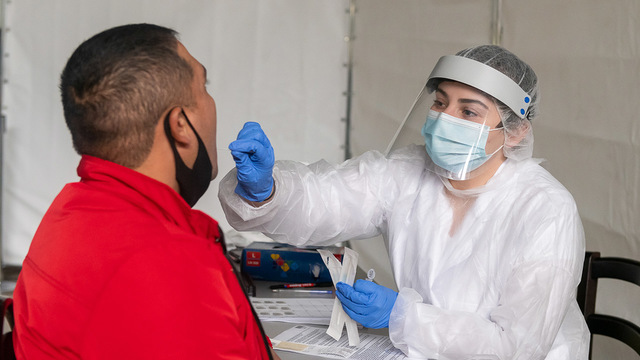India has experienced a sharp increase in COVID-19 infections and deaths that may be linked to a new variant. Hospitals across India, by late April, had a worrying shortage of medical equipment, beds, medicines, and worked with extremely low levels of oxygen available. Some suspended new patients’ admission. Indian leaders – the Modi Government – eventually declared a second nation wide lockdown.
This dizzying rise contributed to the Supreme Court decision requiring the Modi Government to transfer oxygen used for industrial purposes to hospitals to save lives. The oxygen crisis and the crowded hospitals in several Indian regions contributed massively to the death toll. The importance of the Court’s ruling was recognised. It prioritised humankind’s well-being over economic interests. Demanding the transfer of oxygen to healthcare institutions became a positive step demonstrating the judiciary’s dedication to safeguarding the civil society’s health and common benefit. The oxygen crisis in India serves as a global alarm, an eye-opening and learning experience for the international arena. Global organisations and decision-making entities must collaborate and take action for the protection of the fundamental right to life and other human rights and liberties. A well-balanced, strong answer to the perennial dilemma seems to be provided considering the prioritisation of human dignity over the economy. Since the start of the pandemic, Indian health authorities have recorded millions of cases and thousands of deaths. Moreover, the new variant is spreading quickly. Public health experts argue that, during the winter season, the Modi Government lifted measures that enabled large scale gatherings. Some accuse politicians from across the spectrum for encouraging rallies and overcrowded religious celebrations. The Government opened the country’s doors in a supposed attempt to save the Indian flagging economy, arguably a terrible excuse to cover political aspirations.
Other than essential reasons, physical interaction should be avoided in these unprecedented times for the sake of the health of the individual and the community. Amidst the collapse of the healthcare system, citizens in India resorted to asking for COVID-19 related help on social media outlets such as Twitter and Instagram. It is argued that independent monitoring by non-governmental bodies should be even more incentivised. It fuels local and international cooperation between mechanisms operating in India and at a global level. The question thus arises, to what extent should they interfere? Can an immediate, effective global response be expected?
The exodus brought millions of citizens back to the poverty line levels. India launched its vaccination program (starting on 16th of January), but only a small part of the population has had access to it, but the reach has grown gradually. While the country’s vaccination rates show promise, it is a tremendous challenge to have vaccines available for everyone, to reach universal access due to the size of India’s population. It will take a long time to get the country’s population vaccinated. The largest cities till late May experienced a much higher number of body cremations and burials under COVID-19 protocols with crematoriums running full. Members of the State’s health authorities said that this incredible increase occurs due to the body cremation “even though there is a 0.1% probability that the person has been infected”. It was said that “patients arrive at hospitals in terribly critical conditions and die before being tested” and, also, that “patients are brought to hospitals already dead and it is hard to tell if they are cases of infection caused by the pandemic”. Yet, academics and researchers argued that many Indian regions are in “data denial”. Circumstances of large crematoriums occupied with an astonishing number of bodies weekly are spread all around India. They reported a much higher number of cremated bodies than the data on the pandemic-caused deaths provided by the Government. Consequently, those who lose relatives seek funeral services taking place in improvised spaces carrying out mass burials and cremations.
International medical aid – announced by many countries including the US, the UK, many EU states like France and Germany, China, Pakistan and Australia – was sent as an “urgent response” to the second world most populated country’s needs that has experienced the collapse of its national health system. Airplanes with tonnes of medical equipment including oxygen generators and COVID-19 test kits landed in India. Nurses and medics coming from abroad also hoped to travel to India to support the healthcare system. As announced by the Chinese Government, China will keep collaborating with the international community to push forward fair access to vaccines in developing countries like India. Many countries have now imposed a travel ban on travellers coming in from India and other countries facing devastating outbreaks in order to try to prevent the spread of COVID-19 variants. A WHO official said that the highly contagious COVID-19 variant spreading in India was a “variant of concern” highlighting that it became a global health threat. While providing urgent support to the health system, UNICEF has been assisting the Indian Government in ensuring services for vulnerable children continue functioning. It is providing support to help ensure that millions of children across the states are able to continue studying. While delivering a speech in front of a group of farmers, Prime Minister Modi called for “additional precautions” to avoid COVID-19 spreading among inhabitants living in rural areas. Dozens of bodies and mortal remains are being found in the Ganga River. Local residents and journalists explained that the scarce wood for cremations and the increasing costs associated with funerals forced families to throw their dead loved ones’ bodies, victims of COVID-19, to the River. This sort of “pandemic apartheid” must come to an end immediately.

